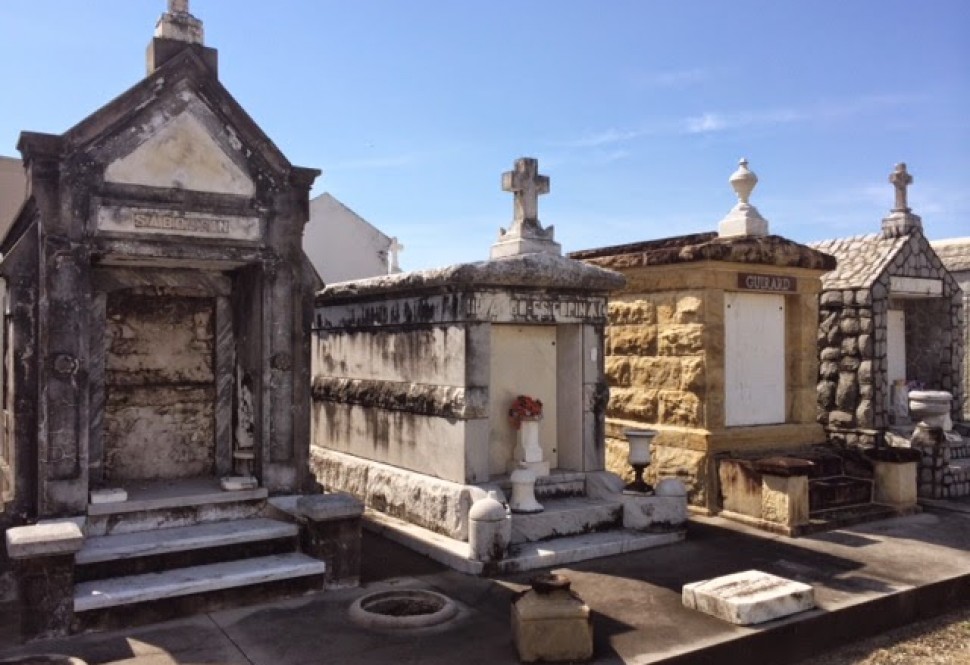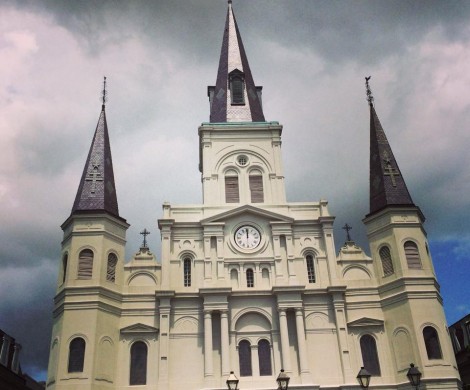
One such story revolves around how the city honours its dead. In New Orleans they don’t bury their dearly departed six feet under, but in mausoleum-like tombs above the ground. And to understand the reason behind this practice, we need to go back in time to the time NOLA (New Orleans, Louisiana) was founded. It was nothing but a muddy swamp with some wooden shacks by the Mississippi river when the French claimed it. The entire city was built on swampland. Most of the city is 7 feet below sea level and the French Quarter is a towering 2 feet above sea level! So the water table is pretty high.
So, when the family of early settlers tried to bury Uncle Harry in a coffin below ground, they couldn’t dig too deep without making a soggy, watery mess. Initially, they tried to keep him down with stone slabs, but the city is also prone to frequent rainstorms, hurricanes, and flooding. That means, one rainstorm later, the rising water table would literally pop the coffin out from below ground and Uncle Harry came floating by to the doorstep to say hello from the beyond.
Taking inspiration from their European colonisers, where interring the dead in vaults was a common practice, they started building above ground tombs to place the coffins. This is where it gets interesting. Entire families are buried in one tomb. What happens is that a family buys a plot to build their tomb and this is passed down through the generations. When a family member passes on, he is placed in a coffin and interred in the vault and the vault is sealed shut. In the New Orleans heat, it doesn’t take very long for bodies to decompose (they are literally baking in the vaults). One year and one day later, the vault is broken open and whatever little remains, is placed in a special burial bag and pushed to the back of the vault, from where it goes down a chute to the ground below. The coffin is then destroyed, and the vault is now ready for a newly deceased family member.
Over time the cemeteries, with elaborate sculptures and other decorative artwork embellishing the tombs, have come to come to resemble small villages, earning the nickname ‘Cities of the Dead’.


This possibly means that either the lineage ended or the families have long moved away. Some tombs have a brass plate embedded in the ground in front of them that says ‘perpetual care’. This means families have made arrangements with the archdiocese to take care of the tombs long after they cease to exist. One tomb in particular caught my eye, because the last member buried in there was a victim of Hurricane Katarina in 2005.
There are 42 such cemeteries in New Orleans with many fascinating stories. Tour companies conduct detailed guided tours. Pirates, politicians, Voodoo Queens….they are all in there. We stopped by this one as part of our guided bike tour of the city. Our tour guide told us that on All Saints day, families show up here to celebrate their dead by cleaning the tombs, polishing the marble, placing fresh flowers and have full-fledged picnics and parties around the tombs!
As the popular Cajun expression in New Orleans goes – ‘Laissez les bons temps rouler’ (Let the good times roll!)


[…] Tremme neighborhood established by the first free people of colour, the unique above-the-ground cemetery at St.Louis No.3, the Esplanade of colourful Creole Millionaires’ mansions, the beautiful city park, the […]